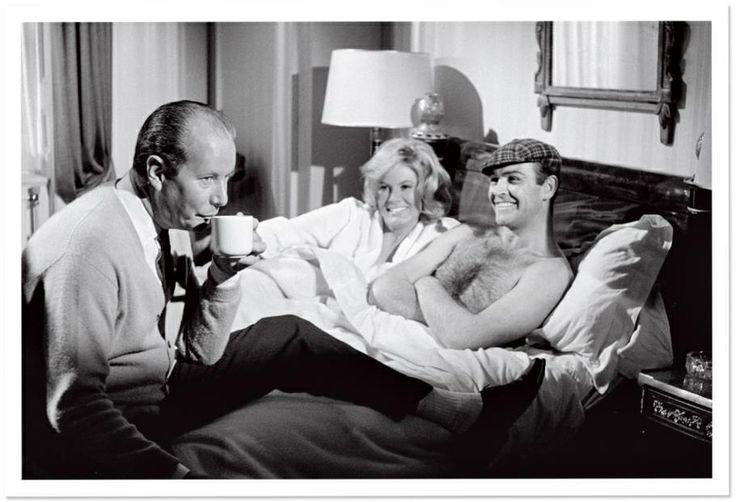Terence Young (Shaun Terence Young)

Terence Young began his film career as a screenwriter in British films of the 1940s, working, for example, on Brian Desmond Hurst’s On the Night of the Fire (1939), Dangerous Moonlight (1941), and A Letter From Ulster (1942). In 1946, he returned to assist Hurst with the script of Theirs is the Glory, which recaptured the fighting around Arnhem bridge. Arnhem, coincidentally, was home to the adolescent Audrey Hepburn. During the filming of Young’s film, Wait Until Dark, Hepburn and Young would joke that he was shelling his favorite star without even knowing it. Young also directed an account of the Guards Armoured Division They Were Not Divided. Young’s first sole credit as director (and also Christopher Lee’s film debut) was Corridor of Mirrors (1948), an acclaimed film made in France. After directing a few English films, Young directed several films for Irving Allen and Albert R. Broccoli’s Warwick Films in the 1950s, including The Red Beret with Alan Ladd. Young was also a story editor at Warwick. This association led to his being offered the directorship of the first two James Bond films. Terence Young had previously worked five years earlier with the then relatively unknown Sean Connery, who was to play Bond, on Action of the Tiger. For the first Bond film, Lois Maxwell claimed that “Terence took Sean under his wing. He took him to dinner, showed him how to walk, how to talk, even how to eat.” It led to three of the first four Bond films: Dr. No, From Russia with Love, and Thunderball. They became financially and critically successful and helped Sean Connery become a superstar during the 1960s. During the filming of From Russia with Love, Young and a photographer nearly drowned when their helicopter crashed into the sea while filming a key sequence. They were rescued by other members of the film crew. Young was back behind the camera thirty minutes after being rescued.
Terence Young never made any films as popular as his mid sixties work that included The Amorous Adventures of Moll Flanders with husband and wife team Richard Johnson and Kim Novak, and Wait Until Dark with Audrey Hepburn. He made many films in Europe, including The Poppy Is Also a Flower (1965), Triple Cross (1966) – a story of Eddie Chapman starring Christopher Plummer, Mayerling (1968), L’Arbre de Noel (US: The Christmas Tree a.k.a. When Wolves Cry) starring William Holden (1969), War Goddess (a.k.a. The Amazons) (1973), and several films with Charles Bronson including Red Sun, Cold Sweat and The Valachi Papers. Young also has story credit for the French spy film Atout coeur à Tokyo pour OSS 117. According to Young, he was offered and turned down the direction of For Your Eyes Only and Never Say Never Again. Young also replaced the original directors of The Klansman and The Jigsaw Man. He undertook Sidney Sheldon’s Bloodline (1979) and Inchon (1981). Young was also the editor of The Long Days or al-Ayyam al-Tawila, a six-hour Iraqi telenovela about the life of Saddam Hussein. Terence Young also directed Laurence Olivier in Inchon (1981) and The Jigsaw Man (1982). Olivier and Young had been friends since 1943 when Olivier had initially offered the direction of his film Henry V (1944) to Young, who declined. His wife was the novelist Dorothea Bennett. He died of a heart attack while working on a documentary at the age of 79 in Cannes.
Born
- June, 20, 1915
- Shanghai, China
Died
- September, 07, 1994
- Cannes, France
Cause of Death
- heart attack
Other
- Non-Cemetery Burial



